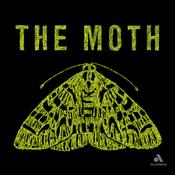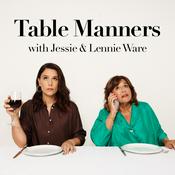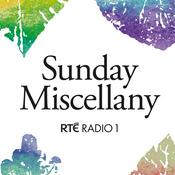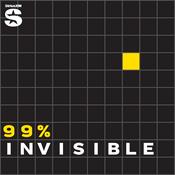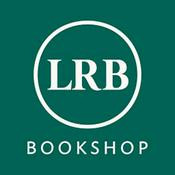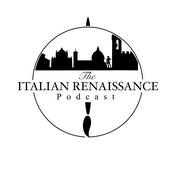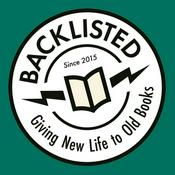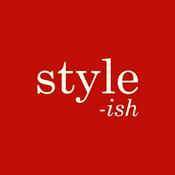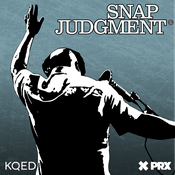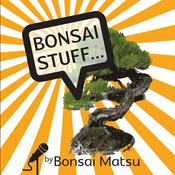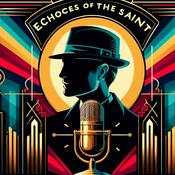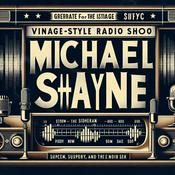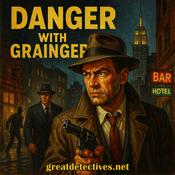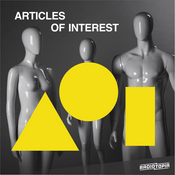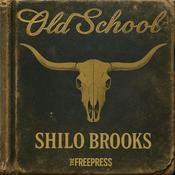Available Episodes
5 of 93
- 89. Inside the Master of Wine Program: History, Requirements, and How to ApplyResources & Links Sign up for the Wine Educate newsletter: https://mailchi.mp/6648859973ba/newsletter Masters of Wine official site: https://www.mastersofwine.org Recommended past episodes: Episode 5 – Understanding Level 1 Episode 8 – Understanding Level 2 Episode 23 – Understanding Level 3 How to Contact Us [email protected] Episode Overview In Episode 89, we continue the conversation from last week's episode on goal-setting and long-term planning for your wine education. Today's focus is the Master of Wine program — what it is, how it began, what the exam involves, and how to apply. This episode is designed to plant a seed for anyone who has ever wondered about the highest level of wine study and what it might take to get there. What the Master of Wine Is The Master of Wine, awarded by the Institute of Masters of Wine, is widely regarded as the most demanding professional wine qualification in the world. The exam assesses a candidate's ability to describe, assess, and identify wine at an exceptionally high level. Many MWs describe it as the most challenging undertaking of their careers. A Brief History The MW was created in the British wine trade in the early 1950s as a way to set a professional benchmark. The first exam was held in 1953, with 21 candidates and only six who passed. The Institute of Masters of Wine was formally established in 1955. From there, the program gradually expanded beyond the UK and beyond traditional wine merchants, eventually admitting educators, writers, and international candidates. Today, there are just over 500 people who have ever earned the title, representing about 30 countries. What the Exam Involves The MW exam is completed over multiple days and includes five theory papers and three practical tasting papers. Each tasting exam features twelve wines, and candidates must assess variety, origin, winemaking, quality, and commercial aspects. In 1999, the Research Paper was introduced — a 6,000–10,000 word original research project on a topic of the candidate's choosing. All three components must be passed to earn the MW. The Stages of the Study Program Students accepted into the program complete three stages: Stage 1: A five-day seminar, additional course days, and a Stage 1 Assessment consisting of a 12-wine blind tasting and two essays. Stage 2: Additional seminars and coursework, culminating in the full MW theory and tasting exams held each June. Stage 3: The Research Paper, an in-depth, original piece of work contributing to the world of wine. Throughout the program, MWs volunteer their time as mentors and teachers, guiding students and supporting their progress. Eligibility and How to Apply Applicants must meet the following criteria: Professional involvement in the wine industry (primary livelihood or 20+ hours per week) At least three years of industry experience A qualification equivalent to the WSET Diploma A professional reference, ideally from a Master of Wine Applications open once a year, with the next application period beginning April 20, 2026. Applicants complete an online form along with theory and practical entrance exams. Why This Matters for Students at Any Level Even if you're currently at Level 1 or Level 2, understanding the MW pathway can help you begin planning your long-term goals. Achieving this qualification can take many years, but it is absolutely possible with a clear roadmap, consistent study, professional experience, and financial planning. Scholarships, employer sponsorships, and thoughtful career development can all play a role. If you're just starting out, Wine Educate offers Levels 1 through 3, and past episodes 5, 8, and 23 give useful overviews of each level and how to approach your studies. Stay Connected If you haven't subscribed to the newsletter, visit wineeducate.com and click the green sign-up button. Each week's newsletter includes Level 3 essay questions, Level 2 quizzes, and Level 1 wine tips to support your studies.--------9:35
- 88. What Is the WSET Diploma? Your Complete Guide to Level 4 Wine CertificationResources & Links Sign up for the weekly Wine Educate newsletter for study tips and class announcements: https://mailchi.mp/6648859973ba/newsletter Explore upcoming WSET Level 1, 2, and 3 classes: www.wineeducate.com Listen to past episodes referenced today: Episode 5: Level 1 — What to Expect & How to Prepare Episode 8: Level 2 — What to Expect & How to Prepare Episode 28: Level 3 — What to Expect from the Course and the Exam Episode 4: Wine Scholarships How to Contact Us Questions about WSET classes, study plans, or next steps? Email Joanne at [email protected] Episode Overview In this episode, Joanne introduces the WSET Level 4 Diploma, the next step for students who have completed the Level 3 Award in Wines. With the final Level 3 classes of the year wrapping up, many students naturally begin to wonder what comes next. The Diploma is a major milestone in wine education, and this episode offers a clear, approachable explanation of what it involves, how it is structured, and what students should expect. Joanne explains the six Diploma units (D1 through D6), each with its own focus and weighting toward the final grade. She outlines how each unit is assessed, including the multi-day theory and tasting structure for D3, and the independent research assignment required for D6. Listeners receive guidance on the level of commitment involved, including the minimum study hours recommended by WSET and the realistic timeframe for completing the program. The episode also addresses the financial side of Diploma study, an important but often overlooked component. Joanne breaks down tuition, travel, and wine-sampling costs, and points listeners toward scholarship opportunities highlighted in Episode 4. Finally, she offers perspective on whether the Diploma is "worth it," sharing her own experience and the value it brings to a wine professional's knowledge, tasting ability, and long-term goals. This episode is part of a short end-of-year series designed to help listeners think about their 2026 wine goals in a thoughtful, informed way. Next week, Joanne explores the Masters of Wine program, the highest level of achievement in wine education and the natural next step after the Diploma.--------11:27
- 87. Beaujolais Beyond Nouveau: History, Appellations, and the Future of GamayResources & Links Sign up for the Wine Educate newsletter (weekly WSET study tips for Levels 1, 2, and 3): https://mailchi.mp/6648859973ba/newsletter Explore upcoming WSET classes and trips: www.wineeducate.com Listen to the Wine Educate Podcast on: Apple Podcasts Spotify YouTube (video versions available) If you missed last week's episode on Beaujolais Nouveau (Episode 86), listen to that one first for context. How to Contact Us Have a question, suggestion, or Beaujolais story to share? Email Joanne at [email protected] Instagram: @wineeducate Episode Overview In this episode, we stay in Beaujolais but move beyond Beaujolais Nouveau. Building on Episode 86, Joanne looks at the broader Beaujolais region: its geography, history, appellation hierarchy, and some very exciting developments that are shaping its future. This episode is designed to support WSET Level 2 and Level 3 students, but it is also accessible for curious wine enthusiasts who want to understand why Beaujolais is such an interesting region to explore. Joanne also explains why Beaujolais can be one of the most rewarding regions for everyday collectors who do not necessarily have a Burgundy-sized budget but still want to experience site expression, aging potential, and nuance. Where Is Beaujolais and Why Does It Matter? Beaujolais is in France, sandwiched between Burgundy to the north and the Rhône to the south. The region is about 34 miles (55 km) long and 7–9 miles (11–14 km) wide, running from the Mâconnais down toward Lyon. The climate is moderate with four distinct seasons, and the landscape divides roughly into: Northern and western hills with pink granite and poorer soils Southern flatter, more fertile areas This split in topography and soil type directly influences wine styles and quality. A Short History of Beaujolais: Romans, Monks, and Nobles Joanne walks through a brief but vivid history of the region: Romans Beaujolais sat on a Roman trade route. Retired Roman soldiers were often granted land and vines as part of their "retirement package." Several names still reflect this legacy: Brouilly (from the Roman lieutenant Brulius) Fleurie (from the legionary Florius) Juliénas (from Julius Caesar) Monks After the Romans, monastic orders took over much of the vineyard work. Just as in Burgundy, monks carefully observed and recorded which sites produced better wines, effectively mapping out the best terroirs and laying groundwork for today's hierarchy. Nobles and the Burgundy Feud Burgundy wanted nothing to do with Gamay. Philippe the Bold led what Joanne jokingly describes as one of wine history's biggest "smear campaigns," calling Gamay a harmful, bitter variety and ordering it to be pulled out of Burgundy. This pushed Gamay south into Beaujolais, which in hindsight turned out to be a positive shift: Gamay performs better on the low-nutrient pink granite soils found there. Gamay and the Role of Granite Gamay can be very vigorous on fertile soils, producing too many leaves and large bunches that dilute quality. On the poor, pink granite soils of northern and western Beaujolais, yields are naturally limited and flavors become more concentrated. Vines in many top sites are trained in gobelet (bush vine) form, which: Suits the region's traditional style Often requires hand harvesting, especially for Nouveau and the crus In flatter, more mechanizable areas and for some Beaujolais and Beaujolais-Villages, you see more wire-trained vines to allow machine work. The Beaujolais Appellation Hierarchy Joanne breaks down the three main tiers and connects them to geography and style: Beaujolais AOC Appellation established in 1937 Represents roughly 34% of total production Mostly from the flatter, more fertile southern vineyards Generally the lightest, simplest styles with fresh, easy fruit Predominantly Gamay, though a small amount of Chardonnay and a little Pinot Noir exist Beaujolais-Villages AOC Appellation established in 1938 Around 26% of total production Located in the hillier north and north-west on poorer, granite-influenced soils Can come from 39 named villages, which can append their name to the appellation (though in practice most wines are blends from several villages) Wines typically have: Deeper color More flavor concentration A more pronounced mineral character from the granite Beaujolais Crus (10 Crus) The top tier of the region From north to south: Saint-Amour Juliénas Chénas Moulin-à-Vent Fleurie Chiroubles Morgon Régnié Brouilly Côte de Brouilly For WSET: Level 2: focus on Fleurie Level 3: focus on Moulin-à-Vent, Fleurie, Morgon, and Brouilly Styles: Moulin-à-Vent and Morgon: more structured, with greater aging potential Fleurie and Brouilly: lighter, more perfumed, more suited to earlier drinking Well-made crus can age from five up to around ten years, offering a rare opportunity for affordable cellaring and exploration. Why Beaujolais Is a Great Region for Collectors Joanne points out that while top Burgundy is often out of reach for many wine drinkers, Beaujolais offers: Distinct terroirs and crus to explore Wines with real aging potential at a more approachable price point The chance to "collect" over time without needing a grand cru budget For students and enthusiasts, this makes Beaujolais an ideal region to experiment with buying a case, following vintages, and watching wines evolve in bottle. The Future of Beaujolais: Clones, Soils, and Potential Premier Crus There is a lot happening behind the scenes in Beaujolais: National Gamay Conservatory (from 2003) Has identified and collected around 1,000 different Gamay types/clones, highlighting the genetic diversity within the variety. Soil Studies (from 2009) A detailed soil survey identified around 300 different soil variations within the region. For WSET Level 3, you only need to remember "granite" as the key idea, but this research shows how much nuance exists in reality. Lieu-dit and Potential Premier Cru Status (from 2024) Some producers in Fleurie have formally applied to have certain lieux-dits (named, recognized sites) elevated to premier cru status. Other crus are expected to follow this path. The process may take 8–10 years, but it signals how seriously the region is being reassessed in terms of quality and terroir. All of this points to Beaujolais being a region on the rise, with increasing recognition of its complexity and age-worthy wines. Support for WSET Students Joanne reminds listeners that: The podcast is meant to support and deepen what you learn in WSET Level 2 and Level 3, not replace the courses themselves. For Level 2, focus on: The idea of Beaujolais as a region Beaujolais AOC, Beaujolais-Villages AOC Fleurie as a key cru For Level 3, add: More detail on the crus (Moulin-à-Vent, Morgon, Fleurie, Brouilly) Appellation hierarchy linked to site and soil Styles and aging potential More technical detail on carbonic maceration, semi-carbonic maceration, and whole-bunch fermentation will be explored in Joanne's upcoming Level 3–focused podcast, launching in the new year. Newsletter and Study Resources If you are preparing for WSET: The Wine Educate newsletter includes: Weekly study tips for Levels 1, 2, and 3 For Level 3 students, a new essay question each week to practice the hardest part of the exam Sign up at: https://mailchi.mp/6648859973ba/newsletter Join the Conversation Joanne would love to see what Beaujolais you are drinking: Email: [email protected] Instagram: @wineeducate Share your bottles, your favorite crus, or your Beaujolais questions, whether you are in the United States or tuning in from elsewhere in the world.--------12:33
- 86. What Is Beaujolais Nouveau? History, Release Day Rules, and Carbonic MacerationSign up for the Wine Educate Newsletter: https://mailchi.mp/6648859973ba/newsletter How to Contact Us [email protected] Episode Summary In this episode, Joanne dives into Beaujolais Nouveau and why the third Thursday in November is one of the most unique days in the wine world. She explores what Beaujolais Nouveau is, how it originated, how it is made, and why it became one of the most recognizable wine traditions in the world. From Parisian celebrations to American Thanksgiving tables, Beaujolais Nouveau is more than just a wine. It is a global moment of shared release, tied to history, marketing, and a very specific winemaking technique. What Is Beaujolais Nouveau? Beaujolais Nouveau is a wine produced in the Beaujolais region of France from the Gamay grape. It is specifically made for early drinking and is released legally on the third Thursday of November following the vintage. It cannot be sold after August 31 of the following year, as it is meant to be enjoyed fresh and young rather than aged. Only Beaujolais and Beaujolais-Villages wines are permitted to be labeled as Beaujolais Nouveau. The 10 Beaujolais Crus cannot be sold as Nouveau. A Brief History of Beaujolais Nouveau The tradition of Beaujolais Nouveau began in the early 1950s. As France's railroad system expanded in the 19th century, Beaujolais wines could be shipped easily into Paris, where they quickly gained popularity. In the 1950s, Parisians embraced the tradition of celebrating the end of harvest by drinking freshly made wine. In 1951, the Union Interprofessionnelle des Vins du Beaujolais (UIVB) officially set November 15th as the release date. In 1985, France's INAO changed the date to the third Thursday of November as a strategic move to align with American Thanksgiving. This helped cement Beaujolais Nouveau's place as a global celebration wine, linked closely with festive meals and seasonal gatherings. It reached its peak of global popularity in 1999 before declining in the early 2000s. That decline helped refocus attention on Beaujolais' more serious wines and long-term potential. Today, Beaujolais Nouveau represents around 20% of total Beaujolais production. How Beaujolais Nouveau Is Made Beaujolais Nouveau is produced using carbonic maceration, a technique that gives the wine its signature fruity, low-tannin style. Carbonic maceration involves: Placing whole, uncrushed bunches of grapes into a sealed tank. Filling the tank with CO₂ to remove all oxygen and create an anaerobic environment. Allowing intracellular fermentation to begin inside each grape. Once the grapes reach around 2% alcohol, their skins split naturally. The grapes are then pressed, and the remainder of the must finished regular fermentation. This method extracts color but very little tannin, resulting in wines that are soft, low in tannin, and highly aromatic. Common flavor and aroma notes include: Kirsch Banana Bubblegum Cinnamon-like spice Fresh red berries Due to its light structure and bright acidity, Beaujolais Nouveau is best served slightly chilled. Drinking Beaujolais Nouveau Today Although large producers made Beaujolais Nouveau famous, many small producers now create their own versions, adding new energy and quality to the category. Joanne encourages listeners to try a bottle, whether from France or from excellent producers in Oregon and Washington State who also make Nouveau-style wines. Take a photo of your Beaujolais Nouveau and share it: Email: [email protected] Instagram: @wineeducate No matter where you are in the world, you are sharing this moment with wine lovers everywhere on the same day.--------9:59
- 85. Exploring Five Key Southern Rhône Crus: Châteauneuf-du-Pape, Gigondas, Vacqueyras, Lirac, and TavelResources & Links Newsletter Sign-Up: www.wineeducate.com/newsletter-signup Receive weekly Level 2 quizzes, Level 3 essay questions, study tips, and podcast updates. How to Contact Us Email: [email protected] Website: www.wineeducate.com Episode Overview In today's episode, Joanne wraps up the Rhône series with a deep dive into the Southern Rhône appellations, focusing on the Crus and how they differ from the broader Côtes du Rhône wines. This region is warm, Mediterranean, and heavily dominated by Grenache-based blends, though rosé and white wines also play a meaningful role. Joanne also shares a quick story about last night's nine-wine Barolo tasting at the shop, the parallels between Barolo and Burgundy, and why the takeaway was simple: we need to taste more Barolo. The Structure of the Southern Rhône The Southern Rhône is known for its warm climate, flatter terrain compared to the North, and a wide mix of soils. Grenache thrives here, supported by Syrah and Mourvèdre, forming the classic GSM blend. There are three tiers of appellations: 1. Côtes du Rhône AOC The largest category, accounting for more than half of total Rhône production. Mostly red. Medium-bodied, fruity, simple, and designed for early drinking. Some rosé and white is made as well. 2. Côtes du Rhône Villages AOC Stricter rules. Higher minimum alcohol, lower yields, and several villages that may append their name to the label if 100 percent of the wine comes from that village. These are fuller, more structured, and spicier than generic Côtes du Rhône. 3. The Crus The top of the pyramid. Nine Crus in total. Each has its own identity, soil profile, and stylistic markers. The Nine Southern Rhône Crus For Level 2 students, the key Crus to know is Châteauneuf-du-Pape. For Level 3 students, in addition to Châteauneuf-du-Pape, you should also know: Gigondas, Vacqueyras, Lirac, and Tavel The nine Crus are: Châteauneuf-du-Pape, Gigondas, Vacqueyras, Lirac, Tavel, Beaumes-de-Venise, Rasteau, Cairanne, and Vinsobres. Beaumes-de-Venise and Rasteau are also important for their fortified wines. Joanne will cover these in depth on the Level 3 podcast launching in early 2026. Châteauneuf-du-Pape The best-known Cru of the Southern Rhône and one of the most recognizable wine regions in the world. Established in 1936 as the very first AOC in France. Over 3,200 hectares planted. Meaning "The Pope's New Castle," the region rose to prominence when the papal court moved to Avignon in the 14th century. Thirteen grape varieties are permitted. Most wines are full-bodied, high in alcohol, and rich in spiced red fruit flavors. Red dominates, though some white is made. No rosé. Quality varies widely due to the size of the appellation and the diversity of soils. The famous galets roulés (large round stones) absorb heat during the day and radiate warmth into the vines at night, encouraging ripeness and boldness. Gigondas and Vacqueyras Both located on the eastern side of the Rhône and both excellent alternatives to Châteauneuf-du-Pape. Gigondas AOC since 1971. Elevation up to 500 meters creates a touch more freshness. Primarily Grenache-led red wines that are full-bodied and spicy. About 99 percent red production. The name is thought to come from the Latin word meaning joyful. Vacqueyras AOC since 1990. Flatter and slightly warmer than Gigondas. More exposure to the Mistral winds. Produces red, white, and rosé. Structured reds that can rival Châteauneuf-du-Pape in quality but at a far better value. Lirac and Tavel These are the only two Southern Rhône Crus located on the west bank of the river. Lirac AOC since 1947. Produces red, rosé, and white. Often compared stylistically to Châteauneuf-du-Pape due to similar varieties and warm conditions. Tavel One of Joanne's personal favorites and one of the first six AOCs created in France. Rosé only. Deeply colored, long maceration, powerful, complex, capable of developing in bottle. Made primarily from Grenache and Cinsault, with up to nine other permitted grapes. A very distinctive style that deserves far more attention than it receives. What's Next Next week begins a new series on Beaujolais as we head toward the Thanksgiving season in the United States. Joanne will cover Beaujolais, Beaujolais Nouveau, and everything surrounding this iconic region and style. If you have not yet joined the Wine Educate newsletter, head to wineeducate.com and click the green bar at the top. You will receive weekly Level 3 essay questions, Level 2 quizzes, study tips, and other resources to support your studies. Thank you for listening and see you next week.--------12:26
More Arts podcasts
Trending Arts podcasts
About Wine Educate: Wine Lessons, Travel & WSET Study Prep
Welcome to the Wine Educate Podcast, your ultimate guide to mastering wine through the lens of WSET wine courses and certifications. Whether you're a beginner exploring WSET Level 1 or preparing for the rigorous WSET Level 3 exam, this podcast is packed with insights tailored for every stage of your wine education journey.
Learn wine tasting techniques using the Systematic Approach to Tasting (SAT), discover expert strategies for excelling in WSET essay practice, and dive into topics like food and wine pairing and career pathways in the wine industry. With episodes on professional wine education, tips for online wine classes, and behind-the-scenes stories from WSET exam preparation, we'll help you turn your passion for wine into expertise.
Whether you're pursuing wine certification for personal growth or advancing your career as a sommelier or educator, the Wine Educate Podcast is here to guide you—one glass at a time. Subscribe now to gain the confidence to ace your WSET courses and elevate your appreciation of wine!
This podcast is for you if you are asking questions such as:
How do I study for WSET classes?
How do I pass WSET Level 3?
How do I pass WSET Theory?
How do I pass WSET Tasting?
How can I take WSET Level 1 course online?
Where can I take WSET Level 1 course online?
Where can I take WSET Level 2 course online?
Where can I take WSET Level 3 course online?
What are the WSET Level 2 study materials?
How can I prepare for the WSET Level 3 exam?
What wine certification programs are available?
What are the best wine education podcasts?
Where are wine tasting courses near me?
How can I take an online wine education class?
What are Wine and Spirit Education Trust certifications?
How can I become a certified sommelier?
What is a wine appreciation course?
What wine education is for beginners?
What are advanced wine studies?
Can I study wine abroad?
Can I study WSET in France?
Can I study WSET in Europe?
What are the top wine regions to visit?
How can I find wine tasting tours?
What are some WSET exam tips?
What are some wine industry certifications?
What are professional wine qualifications?
What are some wine courses for enthusiasts?
What is the WSET diploma program?
What are the benefits of obtaining a WSET Level 1 certification?
How can I prepare for the WSET Level 2 exam?
What topics are covered in the WSET Level 3 course?
Are there online courses available for WSET certifications?
What is the difference between WSET and sommelier certifications?
How long does it take to complete WSET Level 1?
What are the costs associated with WSET Level 2 courses?
Can I take WSET exams online?
What career opportunities are available with a WSET Level 3 certification?
How do I find WSET-approved course providers near me?
What study materials are recommended for WSET Level 2?
Are there practice exams available for WSET Level 3?
What is the pass rate for WSET Level 2 exams?
How does WSET certification benefit wine professionals?
What are the prerequisites for enrolling in WSET Level 3?
Can I retake the WSET exam if I don't pass on the first attempt?
What is the format of the WSET Level 1 exam?
Are there scholarships available for WSET courses?
How does WSET certification compare to other wine education programs?
What are the best resources for WSET Level 3 exam preparation?
How many wines do you taste in WSET Level 2?
Is WSET Level 3 difficult?
What jobs can I get with a WSET certification?
What is the difference between WSET and CMS (Court of Master Sommeliers)?
How can I memorize wine regions for the WSET exam?
Do I need WSET Level 1 before taking Level 2?
What's the difference between WSET Level 2 and Level 3?
How does blind tasting work in WSET exams?
Is WSET certification worth it?
What are the hardest parts of the WSET Level 3 exam?
Can you skip WSET Level 1 and go straight to Level 2?
What are the key sparkling wine styles covered in WSET Level 3?
How do I apply the BLIC (Balance, Length, Intensity, Complexity) method?
What are the key wine regions I need to know for WSET Level 3?
How does soil type affect wine for WSET exams?
What are the essential fortified wines to know for WSET Level 3?
How do I prepare for the WSET Level 3 short-answer questions?
What is BLIC in wine tasting, and how is it used in WSET?
What's the best way to practice multiple-choice questions for WSET?
What's the best way to take notes during a WSET wine tasting?
What wines should I blind taste for WSET Level 3?
How do I taste wine like a professional?
What's the difference between young and mature wines?
How do I recognize wine faults like cork taint or oxidation?
Why do some wines taste buttery?
What's the best way to aerate a wine before drinking?
How do I know if a wine is corked?
How do tannins in wine interact with food?
What wines pair best with soft cheeses?
How does sweetness in wine affect food pairings?
How do I pair wine with vegetarian dishes?
What's the best way to store wine at home?
What is the ideal serving temperature for different types of wine?
How do I recognize residual sugar in a wine?
What does "legs" or "tears" mean in a wine glass?
Why do sommeliers swirl wine in a glass?
What's the best way to train my palate for wine tasting?
What are the best food pairings for high-acid wines?
What is volatile acidity, and how does it affect wine?
What's the best way to decant an older wine?
What are the best wine regions to visit in France?
What's the best way to explore Champagne's vineyards?
How do I book a private wine tour in Bordeaux?
How do I find exclusive wine experiences while traveling?
What are the best wine travel destinations for beginners?
How do I pack wine for international travel?
What are the best wineries to visit in Napa Valley?
What are the top wine destinations for 2025?
What is the best way to study for WSET Level 1?
How many hours should I study for WSET Level 2?
What wines should I taste for WSET Level 3 preparation?
What happens if I fail a WSET exam?
How do I register for a WSET course near me?
What's the difference between WSET and ISG (International Sommelier Guild)?
What is the best tasting technique for WSET blind tastings?
Are WSET certifications worth it for casual wine lovers?
What are the key wine laws I need to know for WSET exams?
How do I properly assess wine structure for WSET tasting exams?
What are the most common wine myths debunked?
How do acidity, tannins, and alcohol impact wine balance?
What are the best free resources for learning about wine?
How does soil type affect wine flavors?
What's the difference between a varietal wine and a blended wine?
What is the pass rate for WSET Level 3?
How do I describe primary, secondary, and tertiary aromas in WSET tasting notes?
What are the best food and wine pairing resources for WSET students?
How do I memorize key grape varieties for WSET exams?
What's the best way to practice identifying wine acidity levels?
What are the key differences between WSET and the Master of Wine (MW) program?
What are the required passing scores for WSET Level 2 and Level 3?
How does WSET Level 3 compare to Certified Sommelier exams?
What are the best study apps for WSET students?
How does terroir influence a wine's characteristics?
What is the best way to write an essay answer for WSET Level 3?
What's the best way to practice WSET multiple-choice questions?
How do I improve my wine vocabulary for WSET exams?
What are the most commonly tested wines in WSET blind tastings?
How do I detect a faulty wine during a WSET tasting?
How do I assess a wine's body in WSET tastings?
What's the difference between WSET Level 3 and the WSET Diploma?
What is the best method for retaining WSET study material?
How do I apply WSET knowledge to a professional wine career?
What are the best ways to prepare for the WSET Diploma?
What is the most challenging part of WSET Level 3?
What is the best wine tasting order for WSET practice?
How do I improve my ability to recognize tannin structure?
What's the best way to identify oak influence in wine?
How do I recognize lees influence in sparkling wine?
What's the best way to train my palate for blind tasting?
How do I detect minerality in wine?
What is the best way to compare Old World vs. New World wines?
Why do some wines taste better after decanting?
How does high-altitude viticulture affect wine flavors?
What is volatile acidity, and how does it affect wine?
How do different yeast strains affect wine flavor?
What's the difference between oxidative and reductive winemaking?
How do I build a wine tasting group for practice?
What are the most common wine faults I should be able to recognize?
How does wine temperature impact aroma perception?
What are the best glassware choices for different wine styles?
How do different pruning techniques affect wine quality?
How do I balance fruit, acidity, and tannin when assessing wine?
What is the difference between fruit intensity and ripeness?
Why do some wines have floral aromas?
What's the best way to cleanse your palate during a tasting?
How do I recognize aged characteristics in white wines?
What's the best way to understand texture in wine?
How do I differentiate between different oak treatments?
How does climate change impact grape growing and wine styles?
What is the best way to learn about fortified wines?
What's the best method for identifying residual sugar in wine?
What are the main causes of bitterness in wine?
How do I train myself to detect subtle wine aromas?
What wines pair best with umami-rich foods?
How does acidity in wine affect food pairings?
What's the best wine to pair with sushi?
How do I pair wine with chocolate-based desserts?
What are the best wines to pair with barbecue?
How do I pair wine with Asian cuisine?
What's the best wine for spicy dishes?
How do I choose a wine for a multi-course meal?
What's the best way to pair wine with cheese?
How do tannins in wine affect food texture?
What are the most expensive wines ever sold?
How do I host a wine tasting party at home?
What's the best wine to bring to a dinner party?
What are the best wine accessories for beginners?
How do I tell if a wine will improve with age?
What is the best way to prepare for the WSET Diploma?
How many attempts do I get for a WSET exam?
What's the best study method for WSET theory exams?
How do I write a proper WSET tasting note?
What are the key sparkling wine terms for WSET Level 3?
How do I recognize a wine's alcohol level in WSET tastings?
How do I improve my tasting speed for WSET exams?
What are the most common mistakes people make in WSET exams?
What's the difference between Grand Cru and Premier Cru in WSET?
How do I assess wine balance in WSET tastings?
What are the key fortified wine styles for WSET exams?
What's the best way to identify tannins in a WSET tasting?
How do I structure my answers for WSET Level 3 essays?
How do I train my memory for WSET exams?
What are the best WSET flashcard apps?
How do I apply WSET tasting techniques to real-world situations?
What are the key differences between WSET Level 3 and the WSET Diploma?
How do I practice identifying acidity levels in wine?
What is the best way to analyze a wine's length in WSET tastings?
What are the key learning objectives of WSET Level 1?
What are the top wine destinations in the world?
How do I plan a wine tour in Tuscany?
What are the best small wineries to visit in Napa Valley?
How do I book exclusive wine tastings in Bordeaux
How do I find off-the-beaten-path wineries?
What's the best way to visit Champagne without a car?
What are the best wine experiences in Spain?
What are the top emerging wine regions?
What's the best time of year for wine travel?
How do I get a job in the wine industry?
What are the best online wine business courses?
How do I start a wine education business?
What are the best wine careers outside of winemaking?
How do I detect Brettanomyces (Brett) in wine?
What's the best way to learn wine aroma descriptors?
What's the best way to train my palate for acidity in wine?
How does alcohol content impact wine perception?
How do I assess the finish of a wine?
How do I determine if a wine is faulty?
What's the difference between flavor intensity and aroma intensity?
How do I identify the effects of lees aging in wine?
What's the difference between fruit ripeness and fruit character?
How do I distinguish between different types of tannins?
How does wine glass shape affect aroma perception?
How do I assess a wine's potential for aging?
What are the key differences between fresh fruit and dried fruit aromas?
What's the difference between oak-derived and bottle-aged aromas?
How do I develop my ability to detect spice characteristics in wine?
What's the best way to compare acidity across different wines?
How do I identify a wine that has undergone carbonic maceration?
What are the best resources for improving wine tasting skills?
What are the best wines to pair with grilled meats?
How do I pair wine with Indian food?
What's the best way to pair wine with creamy sauces?
How do I choose a wine for salty foods?
What wines complement citrus-based dishes?
What are the best wines for pairing with umami flavors?
How does residual sugar affect food pairings?
What are the best wine pairings for Mediterranean cuisine?
What are the best wine bars in Paris?
What's the best way to tour wine country on a budget?
How do I find wineries that allow barrel tastings?
What are the best wine tours in Portugal?
How do I get around Napa Valley without a car?
What are the best wine regions for sustainable wineries?
What are the best organic wineries to visit?
What are the best small-production wineries in France?
How do I start a career as a wine educator?
What are the best social media platforms for wine professionals?
How do I become a wine influencer?
What are the best ways to network in the wine industry?
What are the best continuing education programs for wine professionals?
What are the most common career paths for WSET graduates?
What's the best way to transition from hospitality to wine education?
What's the difference between free-run juice and pressed juice?
How does a winemaker control tannin extraction?
What are the different types of fermentation vessels?
How does sulfur dioxide (SO2) affect wine?
What's the impact of canopy management on grape ripeness?
How do winemakers achieve balance between sugar and acidity?
What's the effect of concrete fermentation on wine flavor?
What are the key differences between organic and biodynamic winemaking?
How does carbonic maceration change the taste of wine?
How do winemakers prevent oxidation in white wines?
What are the best books for wine lovers?
How do I build a personal wine collection?
What's the best way to organize a home wine cellar?
What are the most collectible wine regions?
What's the best way to open a bottle of sparkling wine?
What are the best podcasts about wine?
What's the best way to host a wine and cheese night?
What are the hottest wine trends for 2025?
What's the best way to explore low-intervention wines?
What's the best way to prepare for the WSET Level 1 exam?
How many hours should I study for WSET Level 2?
What are the key learning objectives for WSET Level 3?
How do I create a WSET study schedule?
What are the best online WSET study resources?
How do I develop structured tasting notes for WSET exams?
How do I improve my blind tasting skills for WSET exams?
What is the format of the WSET Level 3 tasting exam?
How can I improve my performance on the WSET theory exam?
What are the differences between WSET Level 2 and Level 3 exams?
How does WSET compare to the Court of Master Sommeliers?
What are the most commonly tested wines in WSET Level 3?
How do I assess a wine's balance in WSET tastings?
What's the best way to recognize tertiary aromas in aged wines?
What's the hardest part of WSET Level 3?
Can I take WSET exams remotely?
How do I know if I'm ready for the WSET Diploma?
What's the best way to recognize high-q
Podcast websiteListen to Wine Educate: Wine Lessons, Travel & WSET Study Prep, The Bookshelf with Ryan Tubridy and many other podcasts from around the world with the radio.net app
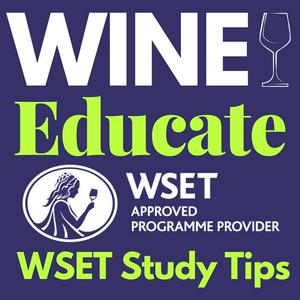
Get the free radio.net app
- Stations and podcasts to bookmark
- Stream via Wi-Fi or Bluetooth
- Supports Carplay & Android Auto
- Many other app features
Get the free radio.net app
- Stations and podcasts to bookmark
- Stream via Wi-Fi or Bluetooth
- Supports Carplay & Android Auto
- Many other app features
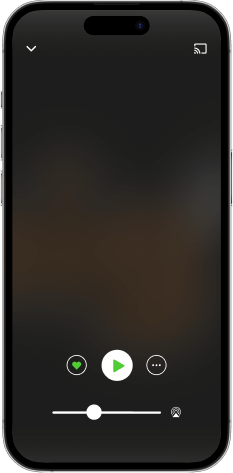

Wine Educate: Wine Lessons, Travel & WSET Study Prep
Scan code,
download the app,
start listening.
download the app,
start listening.



